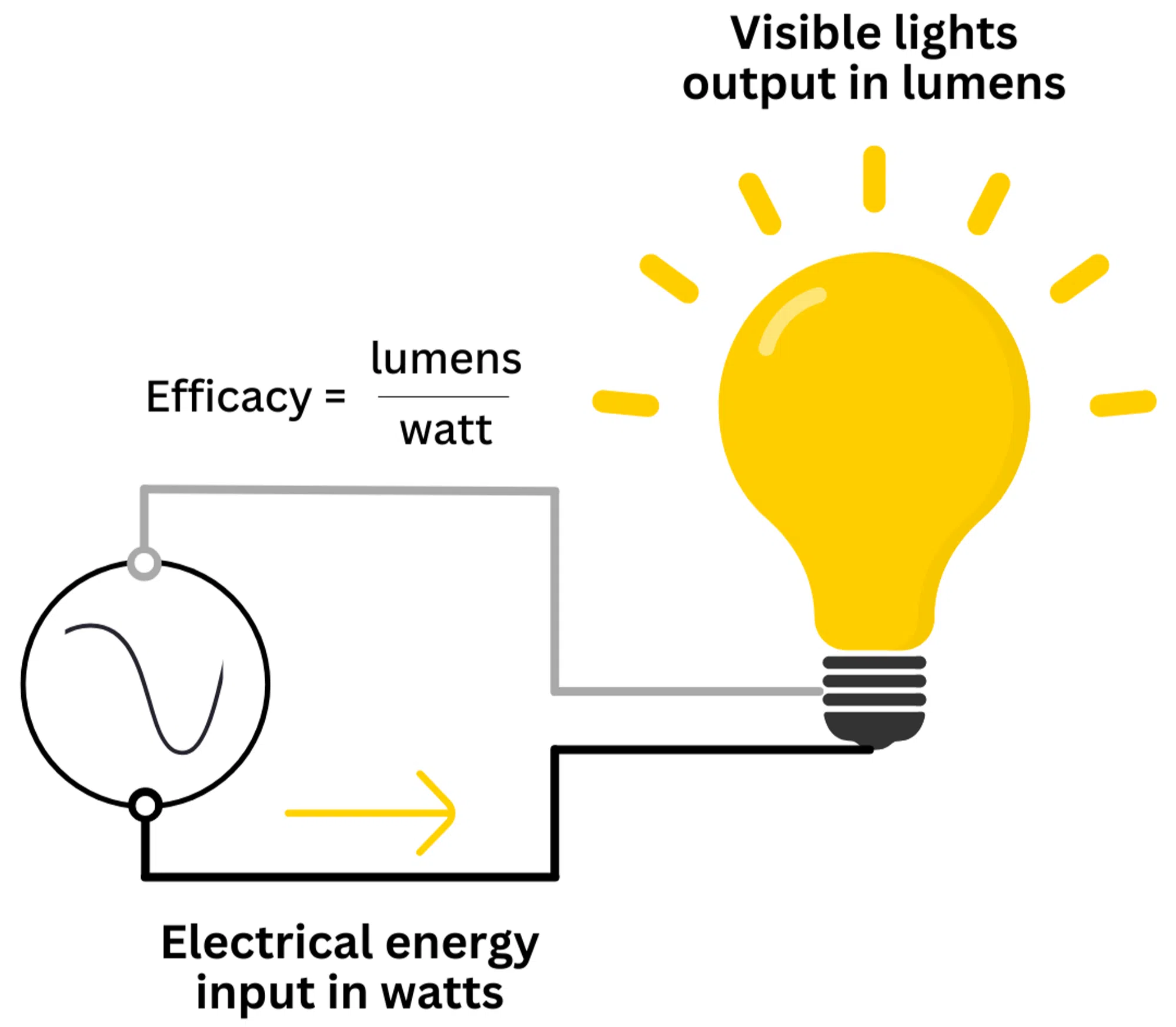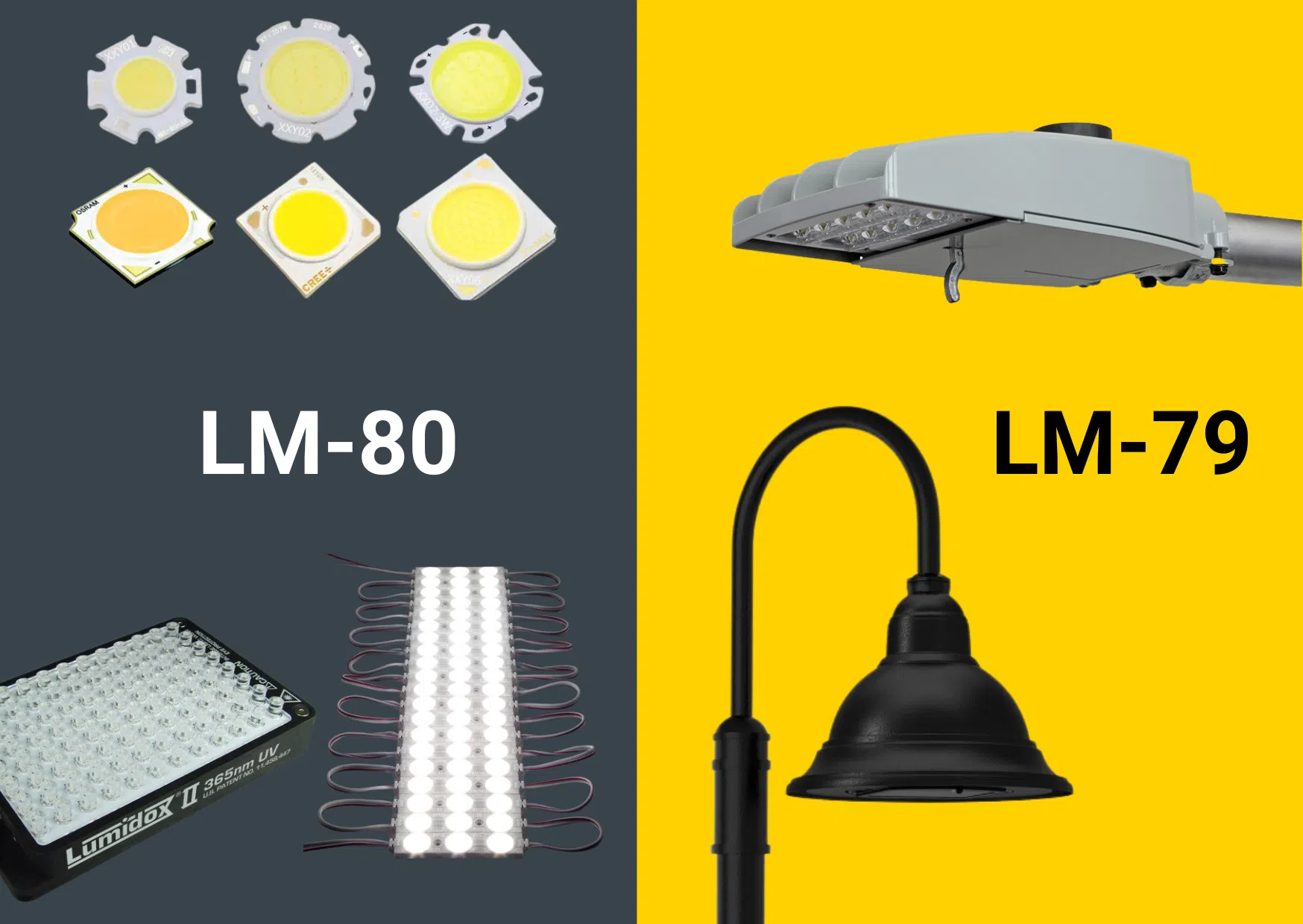
Â
Â
Light Emitting Diodes (LEDs) have transformed the lighting industry. Compared to traditional lighting sources like incandescent and fluorescent bulbs, LEDs are more energy-efficient, provide better light quality, and last significantly longer. These advantages have driven their widespread adoption across various industries. According to the U.S. Department of Energy, LED lighting accounted for 48% of installed lighting units in 2020—up from just 8% in 2015 and 1% in 2010.
Â
As LEDs grow in popularity, manufacturers are constantly competing to produce the brightest and most efficient fixtures. A key metric used to describe this performance is luminous efficacy, which measures how effectively a light source converts electrical power into visible light. It’s usually expressed in lumens per watt (Lm/W or LPW).
Â
While luminous efficacy is an important indicator of performance, it has become a point of contention. Some manufacturers inflate their numbers by testing only the bare LED chip rather than the full fixture, including lenses and other optical components. This practice leads to misleading data that makes it hard for specifiers and users to compare products fairly.
Â
In this article, we’ll explore what luminous efficacy really means, why it matters for solar lighting, how some manufacturers mislead with their claims, and what you can do to ensure you’re getting a reliable product.
Â
What is Luminous Efficacy?
Â
The Illuminating Engineering Society (IES) defines luminous efficacy as “the total emitted luminous flux divided by the total source electrical input power.†It is measured in lumens per watt (Lm/W). For example, if a fixture emits 1500 lumens using 20 watts of power, its efficacy is 75 Lm/W. If another fixture emits 2500 lumens at the same 20 watts, its efficacy would be 125 Lm/W—significantly higher.
Â

Â
Though often confused with efficiency, efficacy is not the same. Efficiency refers to how much light is actually produced compared to what the system is capable of. Efficacy, on the other hand, tells you how well the light source converts power into usable light. When comparing fixtures, efficacy is the more useful metric—but keep in mind that the terms are often mixed up.
Â
Why Does It Matter for Solar Lighting?
Â
For grid-connected systems, higher efficacy means lower energy costs and less strain on the power grid. But for solar-powered lighting, where energy is free, does it still matter? The answer is yes. Higher efficacy means fewer watts needed to produce the same amount of light. This reduces the size and cost of solar panels and batteries, making solar lighting more affordable and practical—even in high-latitude areas with limited sunlight.
Â
It also allows manufacturers to reduce the Effective Projected Area (EPA) of their systems, use cheaper mounting structures, and create sustainable lighting solutions that work reliably in challenging environments.
Â
How Do Manufacturers Misrepresent Efficacy?
Â
Some manufacturers boost their efficacy numbers by testing only the LED chip without the lens or driver. While this may look impressive (like 200 Lm/W), it doesn’t reflect real-world performance. Lenses play a critical role in distributing light evenly, and drivers help regulate power. Without them, the results are not accurate or repeatable.
Â
Many manufacturers don’t clearly state whether their reported efficacy is for the chip alone or the full fixture. This lack of transparency makes it difficult for buyers to compare products fairly. However, there are ways to verify the authenticity of these claims.
Â
The Importance of LM-79 Testing
Â
One of the best ways to verify efficacy is through LM-79 testing, an IES-approved method that measures the optical and electrical performance of complete LED luminaires. Unlike LM-80, which tests components like LED chips, LM-79 provides reliable data on lumen output and efficacy for the entire fixture.
Â
Â
To check if a product has undergone LM-79 testing, look for test reports on the manufacturer’s website. Most Tier 1 manufacturers like Acuity and Cree provide this information. If it's not available, ask directly.
Â
Other Red Flags to Watch For
Â
If a product claims an efficacy outside the typical range (usually between 120–160 Lm/W), that should raise a red flag. Also, watch out for fixtures that claim the same efficacy at different power levels. Real-world performance typically shows a drop in efficacy as power increases.
Â
Making Informed Purchase Decisions
Â
Understanding luminous efficacy is crucial when choosing lighting products. However, not all manufacturers report it the same way. Independent tests like LM-79 help standardize measurements and make comparisons easier. Always ask for test reports and verify claims before making a purchase.
Â
If you can’t find the information you need, consider asking the following questions:
- Can you provide independent testing results for your efficacy claims?
- How do you measure lumens in your products?
- What is the total fixture efficacy, including drivers and lenses?
- Do you have photometric reports for your fixtures?
- Are your efficacy claims based on initial or maintained lumens?
- Can you share references or case studies of your products in similar applications?
Â
Have a question about efficacy or anything else? Our team of solar lighting experts is here to help. Contact us today!
Â
Pure metal powder for thermal spray refers to a fine powder made from a single metal, such as aluminum, nickel, or titanium, that is used in thermal spray processes. Thermal spray is a coating technique where the metal powder is heated and propelled onto a substrate to create a protective or decorative coating. The pure metal powder is typically chosen based on the desired properties of the coating, such as corrosion resistance, wear resistance, or thermal conductivity. It is important to use pure metal powder to ensure the coating has the desired composition and performance characteristics.
Tungsten Powder,Plasma Spray Powder,Pure Tungsten Powder,Tungsten Metal Powder
Luoyang Golden Egret Geotools Co., Ltd. , https://www.xtc-thermalspray.com
![<?echo $_SERVER['SERVER_NAME'];?>](/template/twentyseventeen/skin/images/header.jpg)
